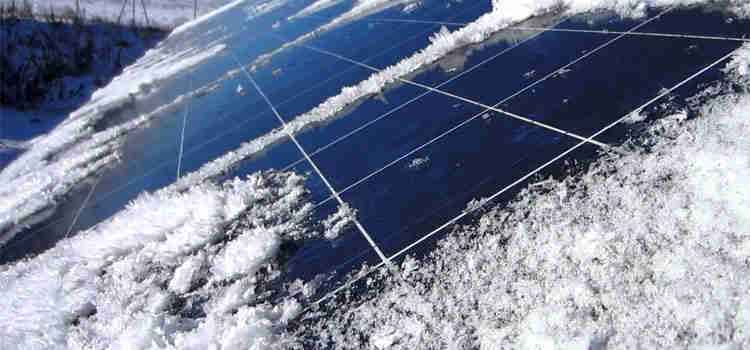We get asked this question a lot: does solar really make sense in northern states when short days, cold temperatures and snow plague us every year for a few months?
The short answer is…yes! While snow does have an effect on your panels and production levels, a blanket of fresh powder is not a death sentence for solar production – in fact, some aspects of snow and cold weather actually help production figures!
How will a solar system generate electricity when it’s covered with snow?
Unless the sun is reaching the panels, your system is not generating electricity. That’s why you should make sure your production and ROI estimates are annual, not month to month. In winter, systems are naturally going to produce less electricity than in the spring, summer and fall – days are shorter and can be overcast and downright gloomy. Snow or ice storms can cover panels and block production. All of this should be factored into a system’s overall production and ROI.
But don’t let that scare you! When a solar panel is covered by a thick layer of snow, it’s blocked from sunlight and can’t generate energy. However, in the larger picture of your energy savings, snow has an insignificant effect on your solar production.
Is it advisable to clear snow or ice from solar panels after a storm?
The benefit of clearing panels is minimal—and dangerous. If the ground is slippery, the roof is slippery (and high off the ground). Solar panels are dark and snow tends to melt off at a faster rate than normal. If you have a pitched roof, be careful of snowfall over walkways and entrances. Snow guards are always a good idea in these cases. Additionally, using anything to clear the panels could cause damage that will impact productivity. Again, a thorough production estimate takes into account snow, rain and gloomy days during the winter. System production will catch up throughout the year when the sun shines and days are longer.
The most important thing to keep in mind is that your safety is more important than a few extra hours of generation on some of the shortest days of the year- we do not recommend trying to clear your panels yourself, as doing so is likely to harm you or the system. If you do not want to wait for the snow to melt, an experienced solar provider can help you clear your roof.
Snowfall is good for your modules
When snow melts off your array, it actually provides a free cleaning service. In drier parts of the United States, dust and dirt can build up on the surface of panels. This buildup can affect a solar array’s efficiency, meaning less production . Solar array owners in these areas are often forced to have their arrays washed to retain efficiency.
While the summer months offer more sunlight (thus, more energy production) than winter months, your panels actually operate more efficiently in colder weather. This is because cooler temperatures boost electrical conductivity, while hot temperatures diminish it. So the lower energy production in the winter may not be as much as you would think.
Fun Fact: Solar panels can convert any type of sunlight into electricity, which means light that’s reflected from snow to your array can help lower your electric bill even more.
Is my roof safe with the weight of the panels and the weight of the snow?
As part of the initial system design, the structural integrity of a roof will be evaluated by a certified structural engineer to account for snow load before the project is permitted to proceed by the local building department.
Bring on the snow!

The next time you wake up to find a layer of snow on your solar array, don’t sweat the minuscule loss in production. Think of the convenient (and free) cleaning it will be providing your panels, and remember that it will melt away and slide off before you know it!

